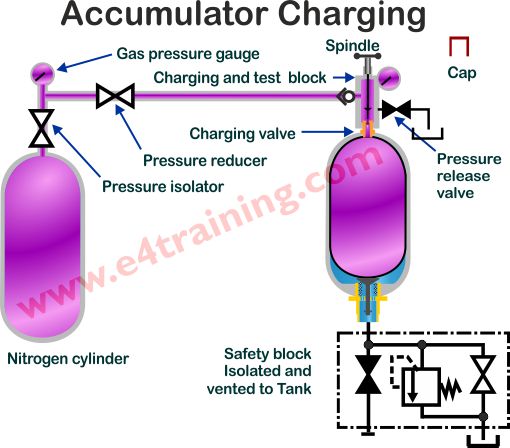Things You Will Learn
Learn about the range of ancillary equipment used on hydraulic systems. This section currently includes hydraulic filters and air breathers, hydraulic accumulators, hydraulic hose, pipework and fittings, but more will be added soon.
HE01 - Hydraulic filters and air breathers

Learn about hydraulic filters and air breathers, the different types, how they work and where they are used.
HE02 - Hydraulic filters and air breathers pro

Learn more about hydraulic filters and air breathers, operating tips, design features and how to specify them.
HE03 - Hydraulic accumulators

Learn about hydraulic accumulators, the different types, how they work and where they are used.
HE04 - Advanced hydraulic accumulators

Learn more about hydraulic accumulators, operating tips, design features and how to specify them.
HE05 - Hydraulic pipework and fittings

Learn about hydraulic pipework and fittings including the history and how they've changed.
HE06 - Advanced pipework and fittings

Learn about more advanced issues with hydraulic pipework and fittings including which are the most appropriate and why.
HE07 - How to fit hydraulic hose correctly

Learn how to fit hydraulic hose so that you avoid any twisting loads and therefore achieve the longest hose life.
HE08 - How to identify hydraulic hose

Learn about the different options and features that will enable you to correctly identify hydraulic hose.
HE09 - Hydraulic Pipework Sizing
This application will size the correct pipework for your application. Features include:
- Sizing the pipework for fluid velocity
- Sizing the pipework for pressure rating
- Recommending the appropriate fitting size
HE10 - Hydraulic Fitting Assembly Guide
The thread tightness calculator will help you find the correct torque or angle of rotation for bolts and threaded fittings. Features include:
- Bolt torque vs angle calculation
- Hydraulic fitting assembly instructions
- Checking fitting remake limits
Applies to the following areas
This module applies to both mobile and industrial applications although mobile equipment is likely to be so finely balanced that it will require development testing to ensure performance limits.
Target Audience
People who are responsible for hydraulic equipment in the following ways:
Managing or purchasing hydraulic equipment.
Maintenance Engineers repairing hydraulic equipment.
Hydraulic equipment designs.
Previous knowledge required
Students are expected to be familiar with:
1. The operation of hydraulic fluid power equipment.
2. Understand hydraulic components and where they are used.
3. Able to read hydraulic circuit and their symbols.